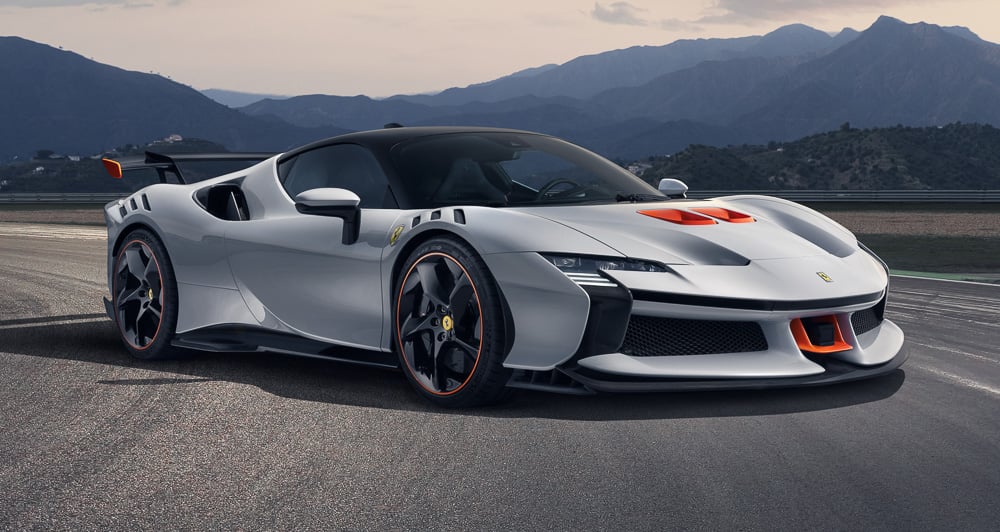
Ferrari’s XX program was launched in 2005 as a means to research and develop technologies from the brand’s various racing disciplines, then applied to special production cars. All the models up until the FXX-K Evo in 2017 were not homologated for the road.
The latest creations, the SF90 XX Stradale and the SF90 XX Spider, are the first road-legal XX models.
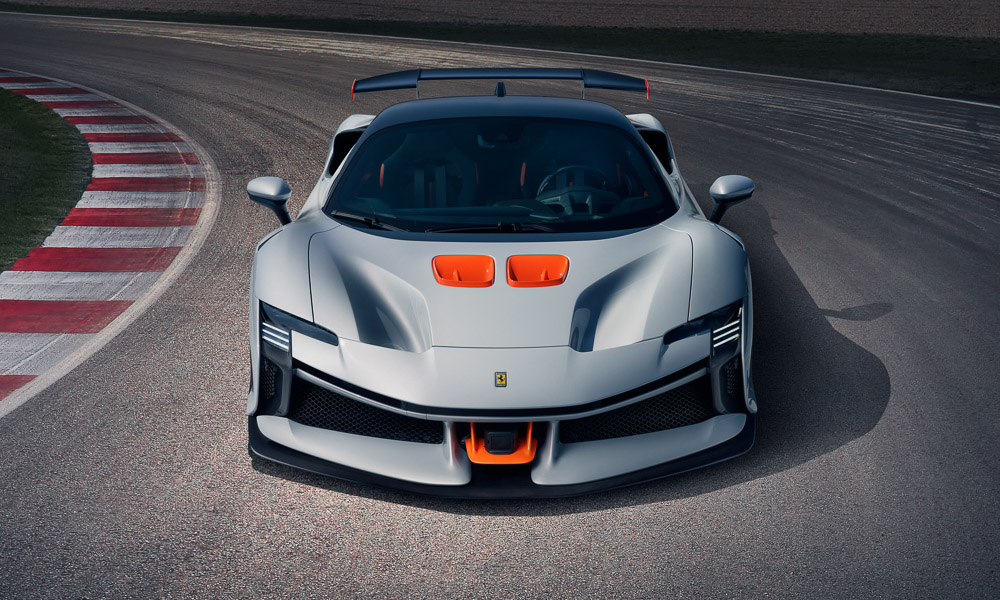
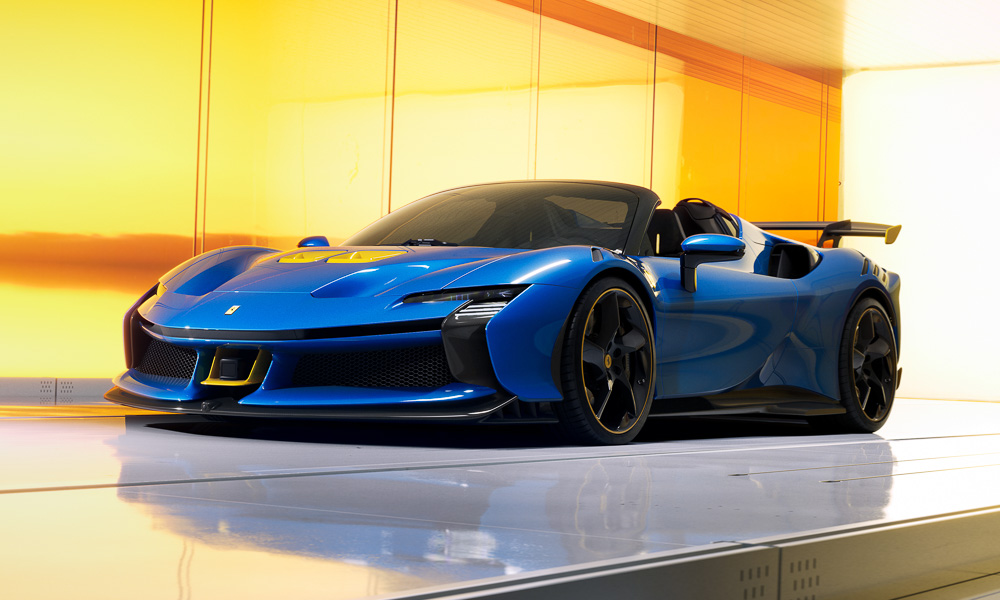
The exterior is a visual feast while the aerodynamics enhance performance, reflecting the purpose of an XX model.
The headlights have a lower upper profile attached to external vertical wing profiles. Ferrari calls this “a more geometric language that reflects the spirit of this new car.” New elements are a pair of lower wings, which appear to be floating, making it look wider and suggesting loads of grip.
The front splitter is larger than that of the SF90 Stradale, generating a more effective airflow underneath, aided by a reworked underbody. The diffuser is likewise bigger, helping increase downforce of over 45kg at 250km/h.
Vortex generators have been redesigned, functioning with the diffuser for a combined effect. Louvres on the front wheel arches also help increase downforce by reducing pressure in the wheel arches, resulting in an overall front downforce figure of 325kg at top speed.
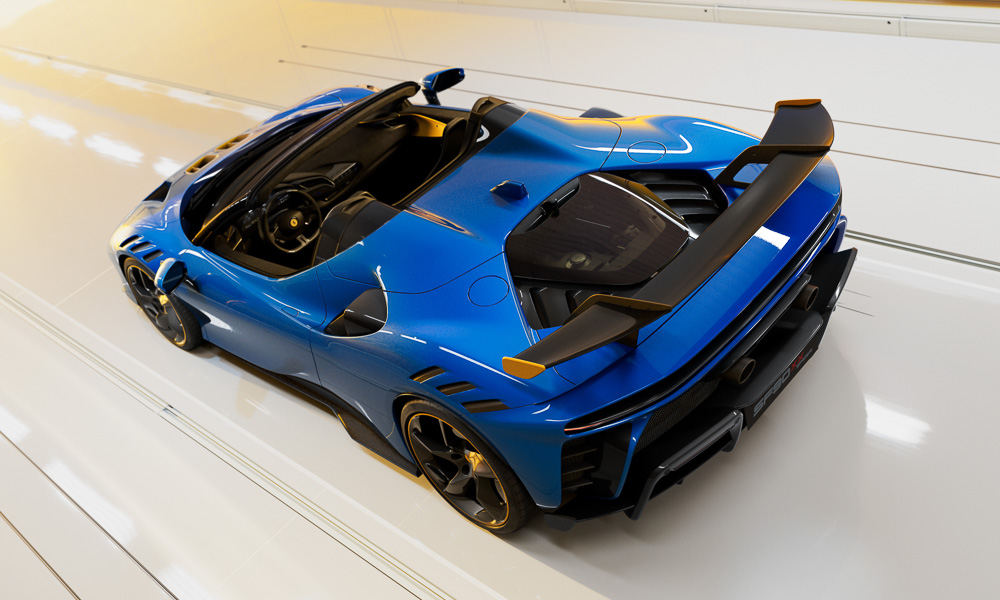
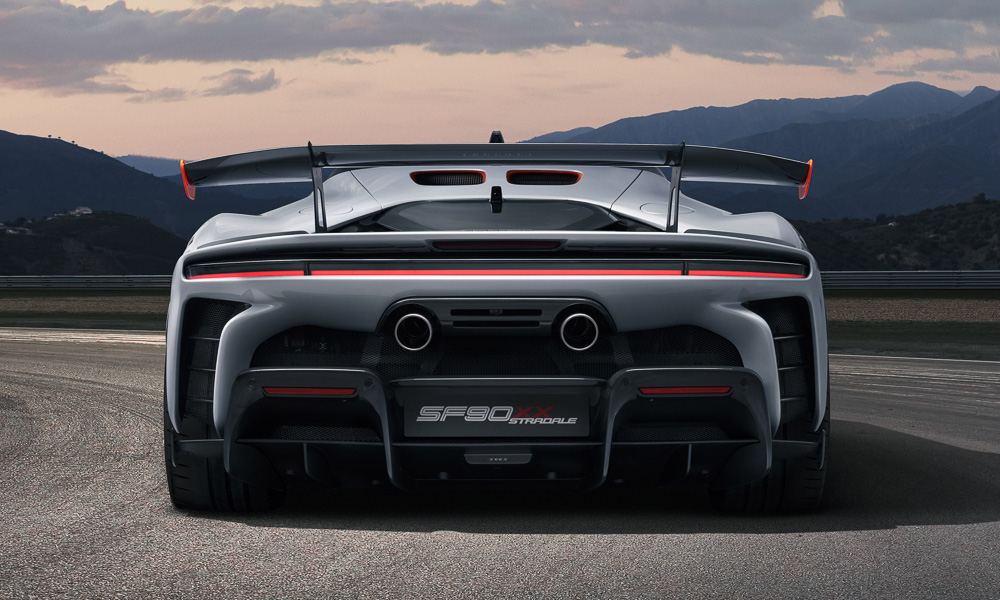
At the rear is perhaps the most prominent element of the SF90 XX Stradale—a fixed rear wing—seen for the first time on a street-legal Ferrari since the F50 in 1995. With tail volume in mind, it’s a no-brainer solution to maximize the car’s aerodynamic capability: 530kg at 250km/h.
Along with the fixed section is a mobile section regarded as the shut-off gurney, which controls airflow, reduces drag at high speed, and increases downforce in corners. Think active aero. The system has two settings: Low Drag and High Downforce.
The result is the absolute maximum rear downforce possible at 315kg at 250km/h. In addition, the diffuser has been developed further and is instrumental to the amount of downforce produced. To put the SF90 XX Stradale’s aerodynamic wizardry into context, the F50 has a downforce level of 440kg at a top speed of 325km/h.
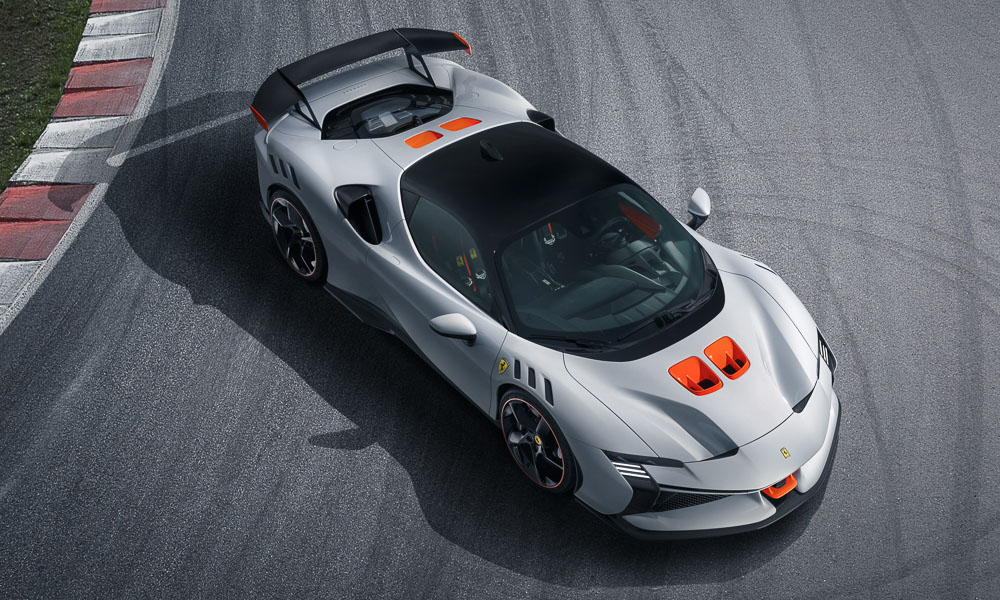
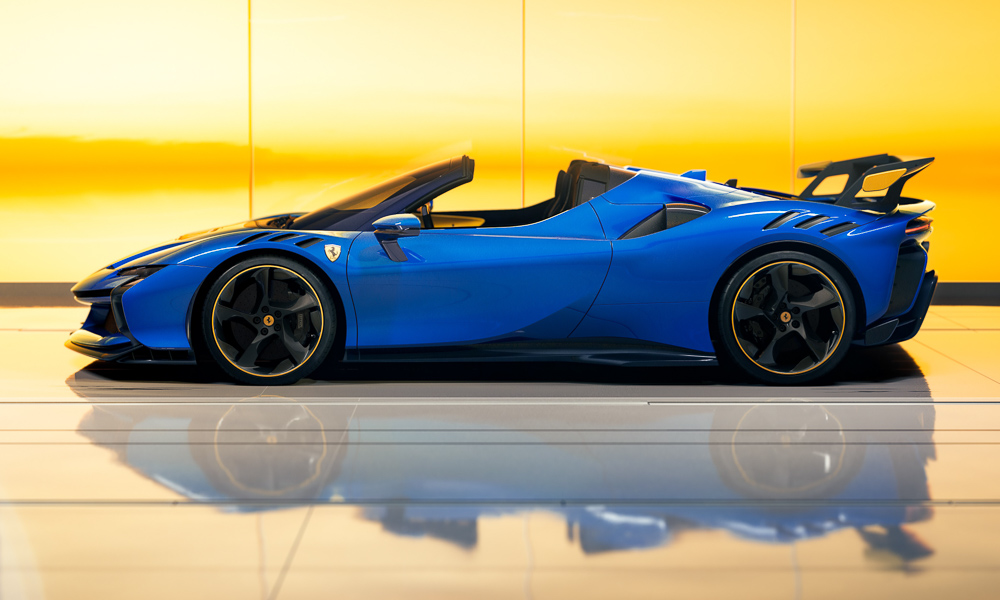
A hypercar won’t be complete without carbon-fiber bits, of which the SF90 XX Stradale has, particularly in the lower section highlighting the car’s technical features. Among the distinguishing elements are the quadrangle air vents on the front and rear lids, which give the car a distinct look.
This model possesses the most efficient aerodynamic performance of all road-legal Ferraris, comparable only to that of the LaFerrari. It delivers twice the maximum amount of downforce of the SF90 Stradale.
The SF90 XX Spider’s enhancements, meanwhile, include flying buttresses that are lower than the Stradale’s. The carbon-fiber roll bars protruding when the roof is down amplify the lowered height of the car. The flying buttresses blending with the arrow design of the front also give a visual appearance of extending the exterior forward.
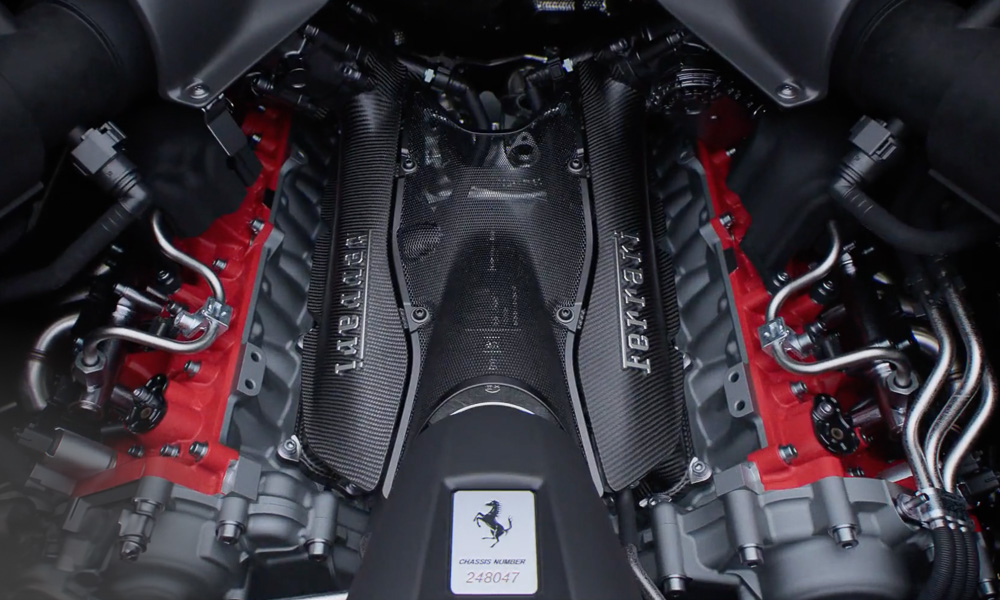
The SF90 Stradale’s engine was made more efficient by polishing the inlet and exhaust ducts, and the compression ratio increased with new pistons and specific machining of the combustion chamber. The absence of a secondary air system, meanwhile, took out 3.5kg off the engine.
The PHEV layout is the same as that of the SF90 Stradale, with the twin-turbo V8 integrated with three electric motors: a pair on the front axle and a third between the engine and the gearbox at the rear.
Electric power is 230hp, as a result of the patented extra boost vehicle dynamics logic, a first on a Ferrari road car. The control logic handles power delivery between efficiency and performance as desired. There are four modes: eDrive, Hybrid, Performance, and Qualifying. The powertrain now has a total output of 1,015hp, 30hp more than the SF90 Stradale.
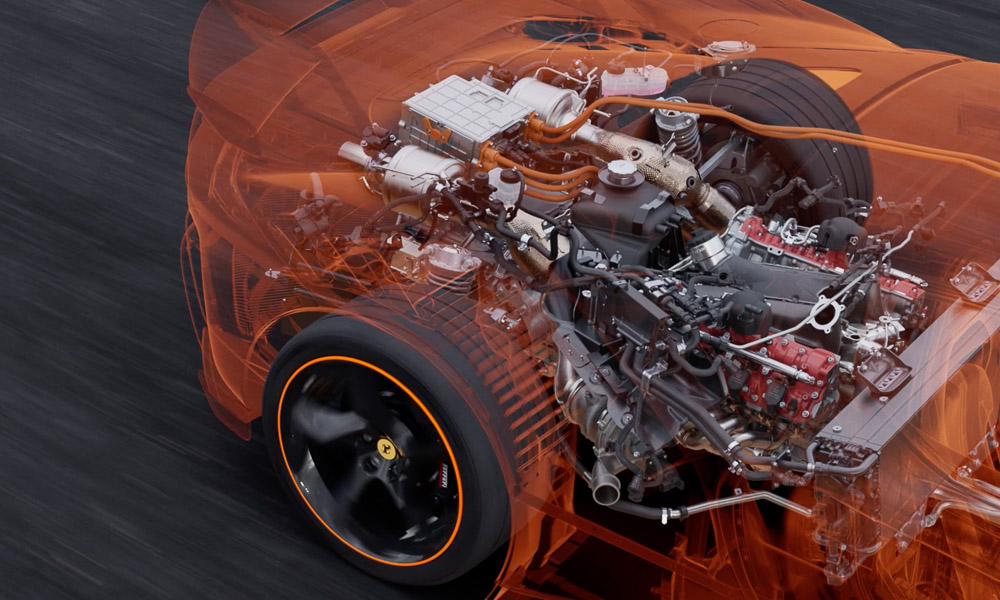
Ultimately, the objective of the SF90 XX Stradale’s development was to extract as much performance as possible while utilizing the SF90 Stradale’s hybrid system.
Along with the tweaking of the engine, Ferrari engineers also made the most of the hot tube system to provide a richer sound from the V8 and channel those sharper tones into the cockpit. The tube is positioned closer to the bulkhead, while the resonator is closer to the engine. The sound is best at midrange, but is progressive toward the limiter.
The eight-speed dual-clutch transmission from the SF90 Stradale has been kept. Although a big change is the gear-shift logic, with the patented logic introduced on the Daytona SP3 finding its way into the SF90 XX duo for more assertive acceleration profiles.
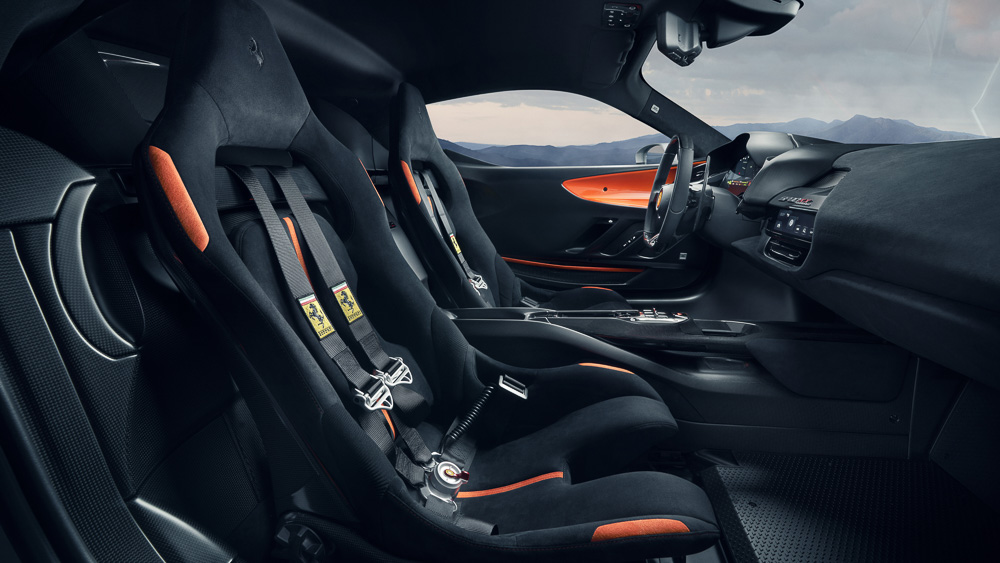
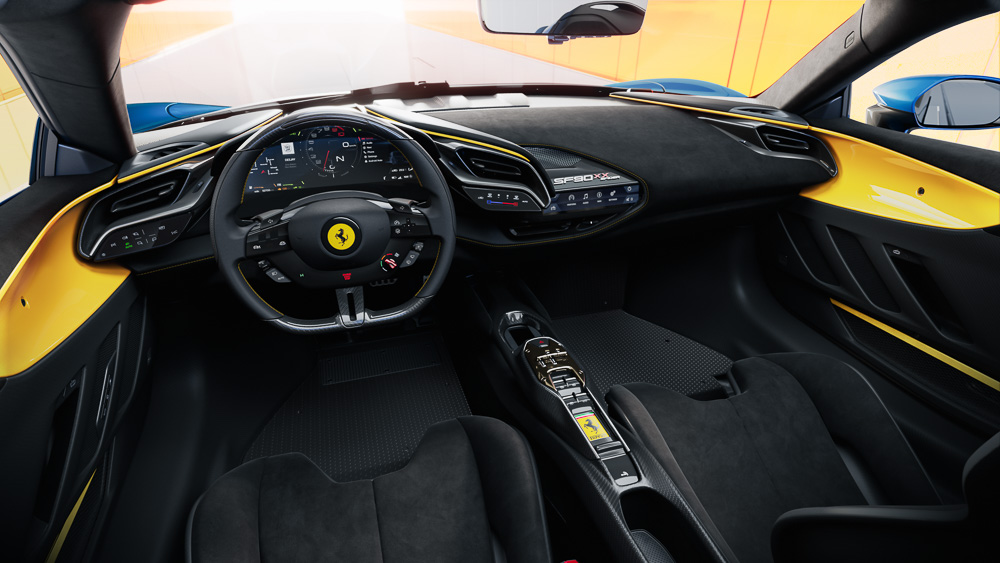
All that power, of course, is aided by exceptional handling and braking. Debuting here is the Ferrari Dynamic Enhancer 2.0, a control system first seen on the 488 Pista. Working with Side Slip Control, it permits drifting to a certain level. This Ferrari also comes with the ABS Evo controller first seen on the 296 GTB, enticing late braking.
Another feature is the extra boost control logic for more power during short bursts, particularly when exiting a curve (active in Qualifying mode only). The control logic also keeps track of battery charge to maximize electric power delivery. Carrying out swift deceleration are redesigned front discs for better cooling, larger rear discs that are 390mm in diameter, and new design brake pads for a maximized contact surface.
Only 799 examples of the SF90 XX Stradale and 599 units of the Spider will be built. Expect the asking price to be astronomical.

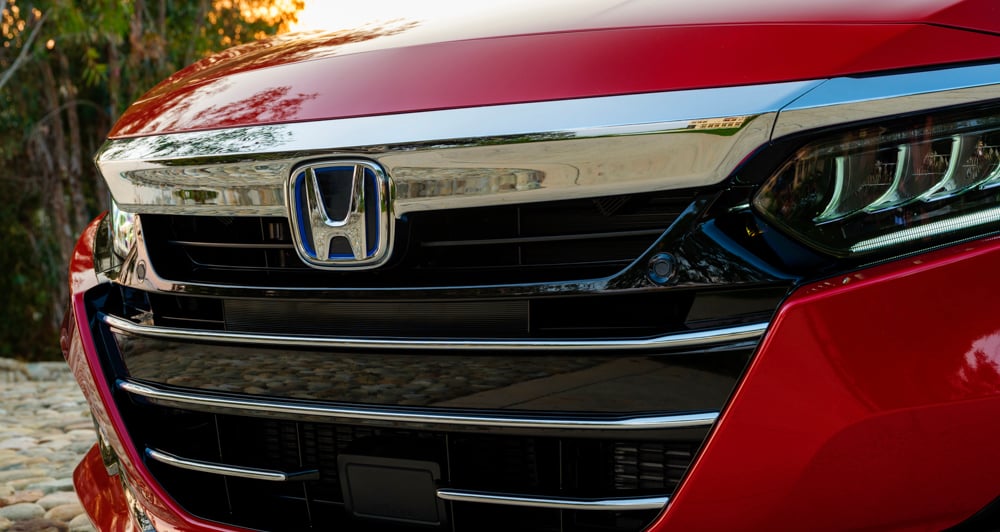
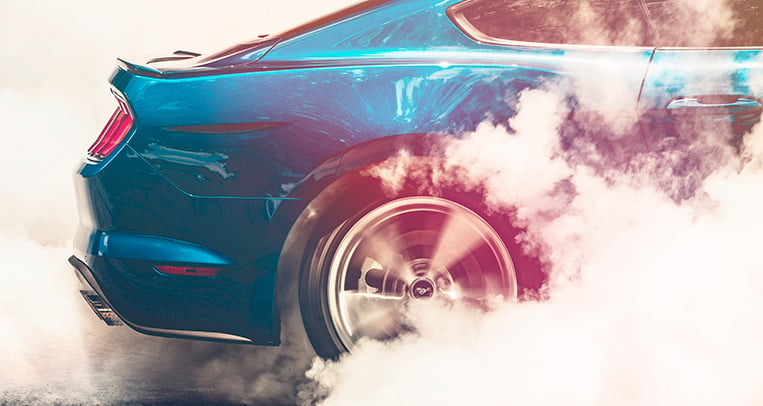
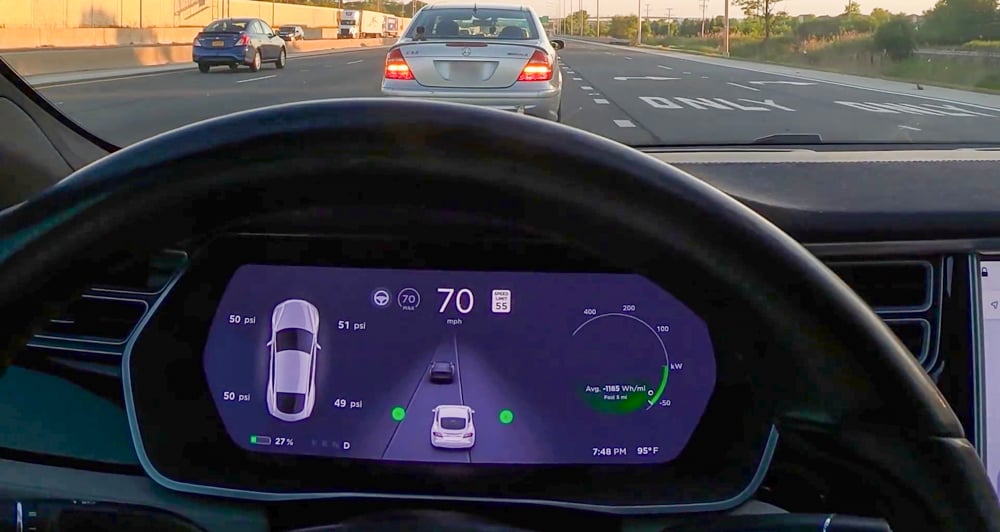
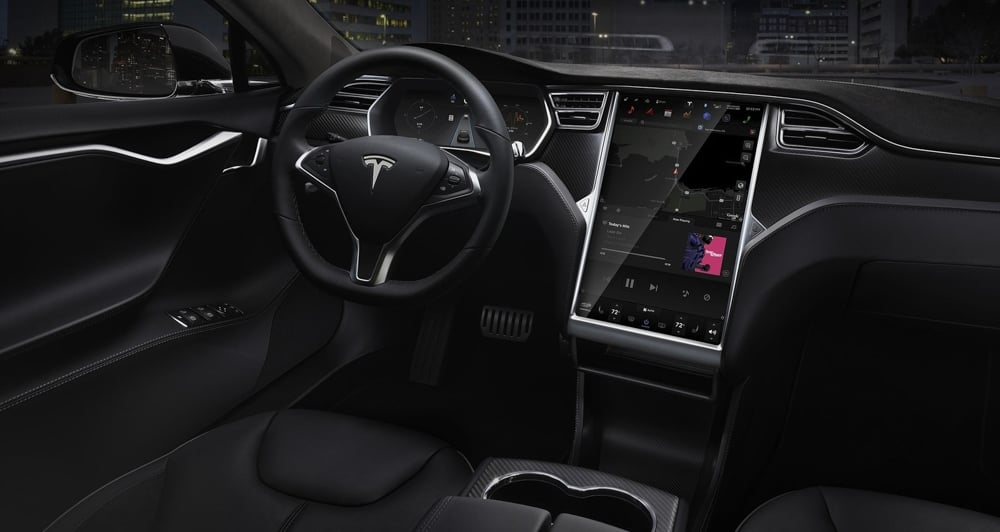
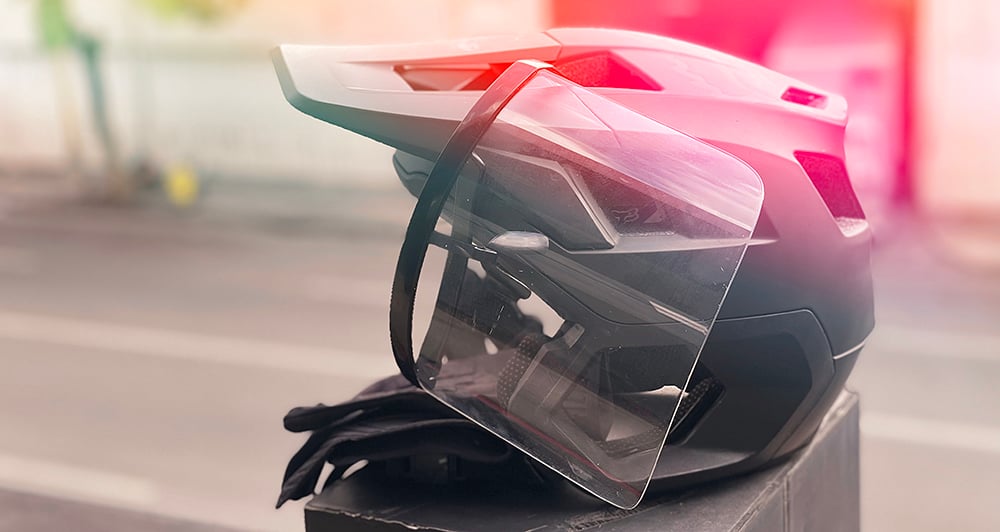
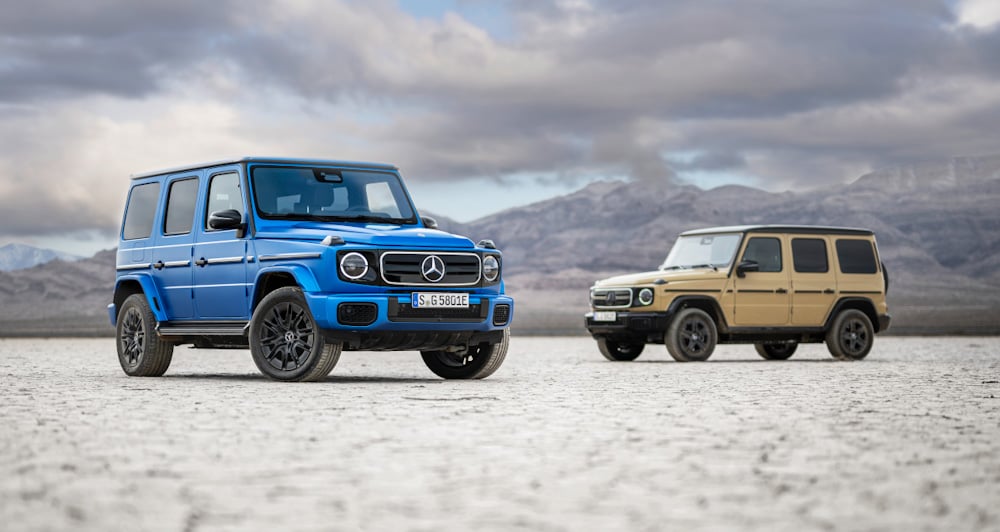
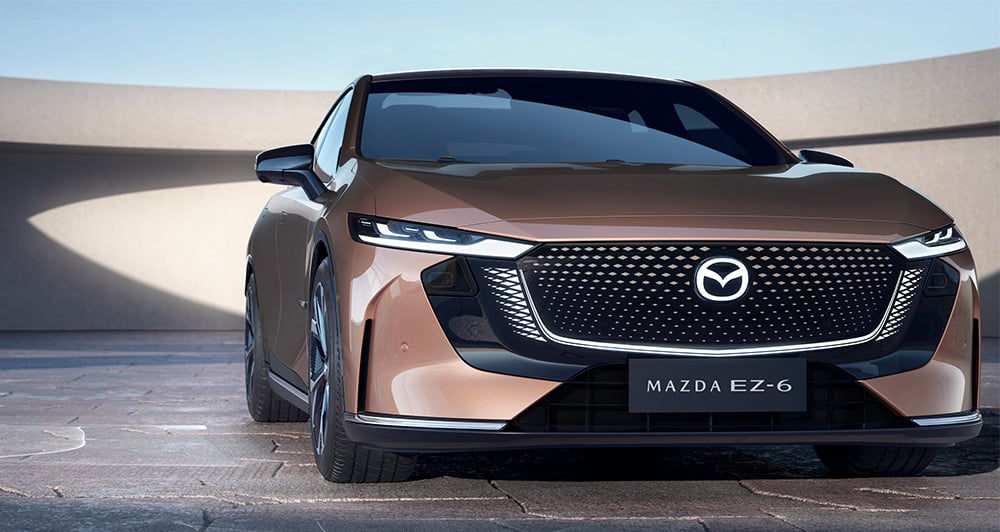
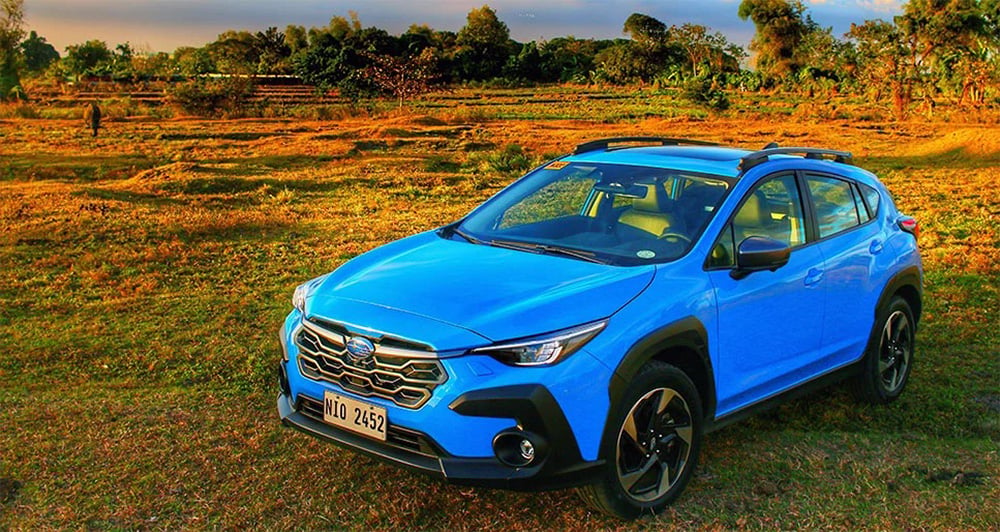


Comments